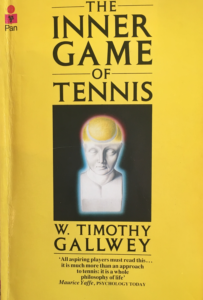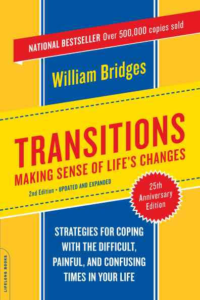
28 Apr Use unconventional strategies to reinvent yourself
The title of this post Use unconventional strategies to reinvent yourself, refers to the fact that more and more people are seeking major changes in their lives and careers, i.e. to reinvent themselves. Whether it’s at the stage of the so-called mid-life crisis or later, when the conventional age of ‘retirement’ arrives, the prospect of this change engenders feelings of confusion, loss, fear, and worry.31 Mar Conflict and succession
Relationships seldom evolve as planned or expected. Conflict and succession are fellow travellers. Whether the succession relationship is between two people, e.g. between incumbent and putative successor, or in a group like a family business, a professional partnership or an executive team, research and experience show that prevention is better than cure. The fundamental cause of conflict in all of these situations is poor alignment of expectations and assumptions by the incumbent and/or the successor. In addition, others connected with this relationship can confound the situation by their behaviours towards the incumbent and the successor.28 Feb Challenge your mental models
Mental models determine your thought processes about how things work. They shape your behaviours: how you work, solve problems, relate to people and think about yourself. Mental models are ingrained, fixed structures founded in your beliefs, habits, scripts and biases. They tell you what’s worked for you in the past – and therefore what you should do in a particular situation now. However, these mental models pose a challenge.16 Jan The virtue of gratitude
When was the last time you said thank you to a member of your staff, a service provider, or your partner? I mean truly said ‘thank you’ in the way you expressed your gratitude, even if the reason for saying ‘thank you’ was in response to a mundane act? Were your words perfunctory and robotic? Or did they generate a positive emotion in the recipient – and in you?06 Dec Holiday thoughts
These holiday thoughts come with my best wishes to all readers of Letting Go. Stepping Up. In reflecting on the past year, what I continue to learn from working with my clients, and what might be ahead, five of my most popular posts capture many of the insights. It’s a privilege to share them with you.30 Nov Bounce back
How effectively do you bounce back from disappointment or failure? Your answer almost certainly depends on whether you are looking through a lens of problems or a lens of possibilities. Setbacks are inevitable in your life and career, so you must decide on how you respond if you are going to bounce back. Carol Dweck, a leading organisational psychologist, explains the essential difference between these two lenses. Either you see problems, or you see possibilities when faced with adversity. Put another way, you can either behave in ways that reflect helplessness and surrender to external forces over which you believe you have no means of control. Or you can be adaptive and make every effort gain mastery of the situation by believing you are in control of your destiny. For an in-depth review of how these differences play out in patterns of behaviour, I recommend this paper by Carol Dweck.07 Nov Resilience
Succeeding in today’s business environment of ever-increasing pressure and unexpected change requires grit, hardiness and resilience. This post is about resilience. It is the least understood and probably the most important of these three traits because of the dire personal and professional consequences of a lack of resilience. Having grit, hardiness and resilience are essential ingredients of sustaining high performance, but they are not the same. Grit is the will and capacity to hang in there; hardiness is the physical and mental toughness to do so; and resilience is the ability to bounce back from setbacks and stress.26 Sep Succession transitions
In my work as an executive coach succession and the related transitions for the people on each side of the process are omnipresent. Yet much of the time neither the person trying to let go, nor the person wanting to step up, adequately understands what’s involved in successful succession and the time it takes. Successful succession takes years; it cannot be hurried. Whether it’s a matriarch or patriarch letting go to younger family members, a CEO grooming one or more potential successors, or a senior partner transitioning her/his professional practice to a junior protégé, the patterns and ingredients of success are the same.31 Aug Letting go
‘Letting go’ is a sequel to my July post ‘Never good enough’, in which I explored the pros and cons of being a perfectionist. ‘Letting go’ is a way to avoid the downsides of perfectionism. While it’s hard to do, its liberating power is a skill every executive can learn to be better at, and from which you too can benefit.31 Jul Never good enough
‘Never good enough’ is a parody on perfectionism, my topic in this month’s post. There are up- and downsides to being a perfectionist. Read why, and how to tell the difference. Describing someone as a perfectionist might sound like a compliment, but that’s not always the case. Perfectionism is often a cause of anxiety, broken relationships and sub-optimal performance. It is human nature to strive to do something as well as you possibly can. It uplifts your self-image and draws the attention – usually the admiration – of family, friends and peers at work. Dictionaries define perfectionism as a wish for everything to be correct. But there’s a dark side to being a perfectionist. Psychologist David Burns put it this way: “Reaching for the stars, perfectionists may end up clutching at air”.27 Jun The inner game
When I first heard people talking about ‘the inner game of tennis’, I didn’t pay much attention. Much less did I grasp the fundamental importance of Tim Gallwey’s 1974 now classic book about achieving peak performance in all walks of life, not just tennis. In The Inner Game of Tennis, we learn that every game is composed of two parts, an outer game and an inner game.
In the outer game, you play by a set of rules against an external opponent with the goal of winning. The outer game consists of the visible things you do and say; what others can see and hear.
In The Inner Game of Tennis, we learn that every game is composed of two parts, an outer game and an inner game.
In the outer game, you play by a set of rules against an external opponent with the goal of winning. The outer game consists of the visible things you do and say; what others can see and hear.
30 May Curiosity
In a 2015 PwC survey of a thousand CEOs globally, ‘curiosity’ and ‘open-mindedness’ were identified as increasingly critical leadership traits in these complex and challenging times. My own experience with c-suite executives supports this thesis and shows every leader and their organisations will benefit by investing in learning to become more curious. Better answers to today’s complex challenges and groundbreaking ways of grasping big opportunities come from asking the right questions. And the ability to ask probing, out-of-the-box questions comes from being deeply imaginative, and from having the courage and insight to ask penetrating ‘Why’ questions, as well as speculative ‘What if ’ and ‘How’ questions? In other words, to be curious.26 Apr Two sides to everything
Your effectiveness and satisfaction will be enhanced if you recognise there are two sides to everything. Two sides to everything creates paradoxes in our personal and professional lives and if you learn to manage the tensions posed by these paradoxes they become game changers for yourself, your team and your organisation.29 Mar Executive presence
Harvard’s Amy Cuddy has written a book on presence showing how to bring your boldest self to your biggest challenges. It is full of wisdom and ideas relevant to executives, so I have written this post to share some of these with you.The nature of executive presence
Your knowledge and command of your content are necessary, but not sufficient, conditions for having executive presence. Too few understand executive presence is much more than this. It is a multi-facetted, mental and physical state in which you are attuned to your true thoughts and feelings and able to spontaneously express them comfortably and convincingly. Other words for executive presence include poise, a word derived from the early French meaning composure and elegant bearing, gravitas, and charisma in a professional business sense.28 Feb Mindful leadership
The November 2015 Mindfulness Leadership Summit explained mindful leadership as “an alternative to just leading from the top down, mindful leadership is leading from the inside out”. To understand how becoming a mindful leader will benefit you, those who follow you, and your organisation, let’s start with a recap of what it means to be mindful. With its origins in Theravada Buddhism, mindfulness is the ability to be aware of the moment. You are totally present in the now, not the past, or the future. Now, the present.17 Jan Indispensable
Are you an expendable or an indispensable member of your organisation? Do you know how to become indispensable? Do you realise you can? There’s no need to ask if you know the difference between being indispensable and expendable! Of course, you understand the consequences of being expendable. In This Side of Paradise, Scott Fitzgerald’s romantic and witty novel, he captures what he learned from his father ‘…although no one is truly indispensable, the pursuit of wisdom enriched by knowledge and skill with a sense of giving back (emphasis added) may allow oneself to become nearly indispensable’. Fitzgerald expressed his idea thus:21 Dec Transitions
At this time of year we need to remember William Bridges’ rule #2: “Every transition begins with an ending”. We have to let go of the old – the pain, baggage and disappointments of 2015 – before we can truly benefit from and enjoy the promise and plenty of the New Year. In the enduring wisdom of Transitions – Making Sense of Life’s Changes Bridges wrote about how to cope with ‘that difficult process of letting go of an old situation, suffering the confusion of nowhere in-betweenness, and launching forth in a new situation’.
He helps us understand the underlying process of personal transition and gives us insights into how it affects us at work and in our personal relationships.
In the enduring wisdom of Transitions – Making Sense of Life’s Changes Bridges wrote about how to cope with ‘that difficult process of letting go of an old situation, suffering the confusion of nowhere in-betweenness, and launching forth in a new situation’.
He helps us understand the underlying process of personal transition and gives us insights into how it affects us at work and in our personal relationships.
